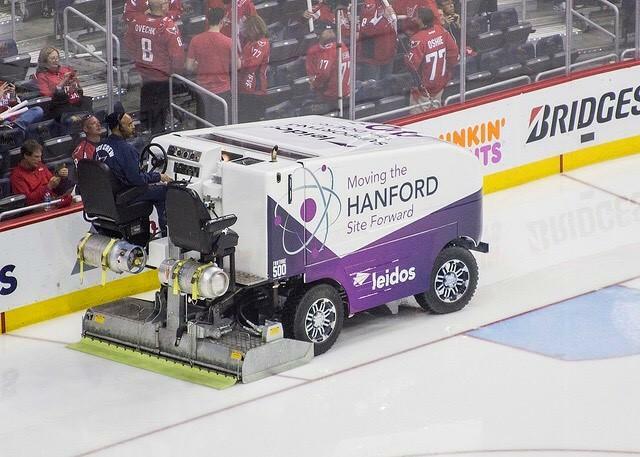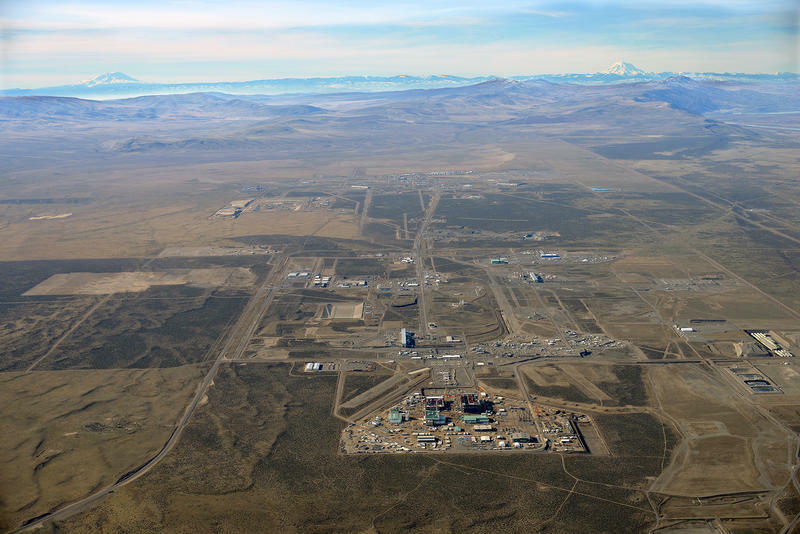What is the Hanford Site, and how is Leidos 'moving it forward?'
Last week, the city of Washington, D.C. celebrated the Washington Capitals' Stanley Cup victory with a parade and rally on the National Mall. The procession route followed Constitution Avenue from the Lincoln Memorial past the White House and ended just short of the United States Capitol. One of the more unique vehicles in the triumphal motorcade was the team’s ice resurfacer, which proudly displays the Leidos logo and a message that might have been curious for many of the roughly 100,000 spectators: “Moving the Hanford Site Forward.”
The Hanford Site, located in remote south-central Washington state along the Columbia River, is a government complex that for decades manufactured large quantities of plutonium, a radioactive element that creates nuclear power. The Hanford Site is perhaps best known for supplying the Manhattan Project with plutonium to conduct the 1945 Trinity Test, the first-ever detonation of a nuclear weapon, and to create Fat Man, the atomic bomb detonated on Nagasaki during World War II. In the decades that followed, Hanford purified most of the plutonium used to stock the U.S. Cold War arsenal.
Things are much different today. Hanford’s sprawling and once-prolific facilities, including hundreds of buildings and nine decommissioned nuclear reactors situated along the river, haven’t manufactured plutonium since the 1980s. Hanford is now considered one of the world’s largest environmental cleanup projects. The industrial complex and surrounding land covers roughly 580 square miles, larger than Los Angeles, storing five decades of toxic waste. According to Hanford’s website, it produced “more than 20 million pieces of uranium metal fuel” and in the process “discharged an estimated 450 billion gallons of liquids to soil disposal sites and 56 million gallons of radioactive waste to 177 large underground tanks.”
The U.S. Department of Energy (DOE) is responsible for dealing with the enormous scale of the Hanford cleanup and others like it at 16 decommissioned U.S. nuclear production sites. At Hanford, DOE is working with the U.S. Environmental Protection Agency (EPA) and the Washington State Department of Ecology to bring the site into compliance with environmental law. As Hanford’s official website points out, “after more than two decades of cleanup, considerable progress has been made at Hanford, reducing the risk the site poses to the health and safety of workers, the public, and the environment.”
When manufacturing stopped at Hanford, so did upkeep to its core infrastructure. This is where Leidos comes in. At Hanford, Leidos provides support to this infrastructure, including roads, communications, information technology and cybersecurity, power service, fire protection, and water and sewage facilities, all of which enable ongoing cleanup and remediation efforts by more than 8,000 workers. As the largest partner on the contract, we also provide more specialized services, including cranes and rigging, fleet maintenance, emergency response, environmental sustainability, and long-term stewardship and transportation.
In short, Leidos moves the Hanford Site forward by making cleanup possible, saving costs, and reinvesting those savings to accelerate the cleanup mission. We are exceptionally proud of this work, which is why throughout the Stanley Cup Finals and in the widely publicized victory parade, we chose to bring Hanford along for the ride. The Tri-City Herald, a publication which covers nearby Kennewick, Pasco, and Richland, Wash., published an article which accurately explains that we have been “working to build the visibility of Hanford,” a display of our commitment to this important work. We’re proud to be a part of the Hanford cleanup, which truly reflects our company’s mission to solve important problems and help make the world safer, healthier, and more efficient.
To learn more, visit leidos.com/doe.





